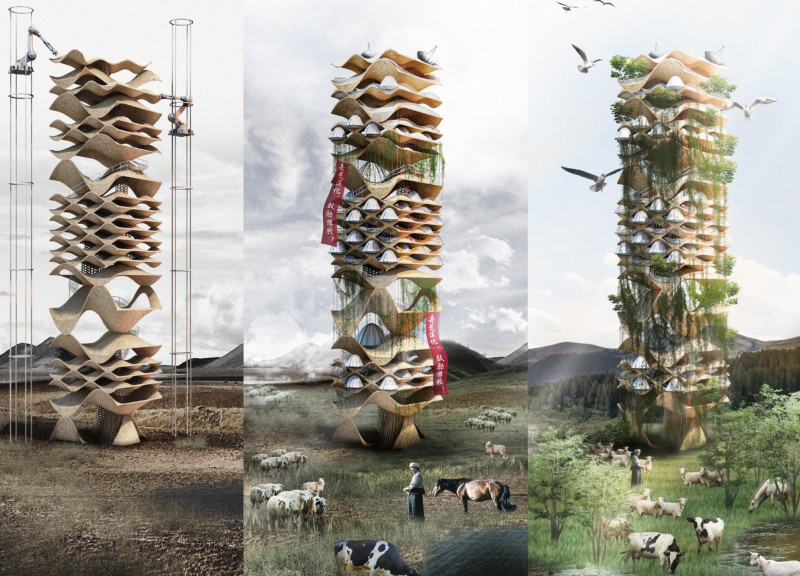5 key facts about this project
Architecture that emphasizes adaptability is a central theme of this project. The design employs modular building components that allow for reconfiguration based on seasonal needs and habitation patterns. This flexibility is essential for accommodating the transient nature of nomadic lifestyles, ensuring that the architecture serves both functional and cultural needs.
Sustainability is a critical aspect of the design approach, with materials selected for their local availability and eco-friendly characteristics. Compressed earth blocks provide structural support and thermal regulation, while bamboo contributes to lightweight construction and rapid growth. Local stone integrates the building with its surroundings, and geotextiles help prevent soil erosion, a vital consideration in arid climates. The incorporation of glass and transparent polycarbonate fosters a connection with the outdoor environment, enhancing lighting while reducing energy requirements.
The project stands out due to its innovative use of vertical space, integrating vertical farming areas within the living structure. This design not only supports food production but also introduces greenery that aids in improving air quality and creating indoor microclimates. Community spaces are incorporated, fostering social interaction and reinforcing community bonds among inhabitants, a significant consideration in nomadic cultures.
A key feature of the "Nomadic Revival" project is its responsive design to environmental conditions. The structure's undulating form is specifically shaped to optimize wind flow and facilitate rainwater harvesting, critical for sustaining life in a desert environment. This approach to environmental integration positions the project as a contemporary solution to age-old problems faced by nomadic communities.
The architectural plans, sections, and designs should be examined for a comprehensive understanding of the spatial organization and materiality inherent in this project. Each element contributes to making "Nomadic Revival" a unique architectural response to the cultural and environmental context of the Hunshandakeh Sands. For more detailed insights into the innovative architectural ideas and design methodologies, readers are encouraged to explore the project presentation further.























